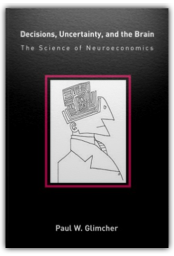
In this provocative book, Paul Glimcher argues that economic theory may provide an alternative to the classical Cartesian model of the brain and behavior. Glimcher argues that Cartesian dualism operates from the false premise that the reflex is able to describe behavior in the real world that animals inhabit. A mathematically rich cognitive theory, he claims, could solve the most difficult problems that any environment could present, eliminating the need for dualism by eliminating the need for a reflex theory. Such a mathematically rigorous description of the neural processes that connect sensation and action, he explains, will have its roots in microeconomic theory. Economic theory allows physiologists to define both the optimal course of action that an animal might select and a mathematical route by which that optimal solution can be derived. Glimcher outlines what an economics-based cognitive model might look like and how one would begin to test it empirically. Along the way, he presents a fascinating history of neuroscience. He also discusses related questions about determinism, free will, and the stochastic nature of complex behavior. 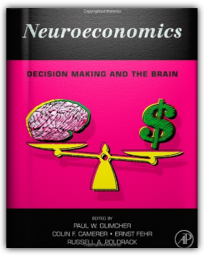
Neuroeconomics is a new highly promising approach to understanding the neurobiology of decision making and how it affects cognitive social interactions between humans and societies/economies. This book is the first edited reference to examine the science behind neuroeconomics, including how it influences human behavior and societal decision making from a behavioral economics point of view. Presenting a truly interdisciplinary approach, Neuroeconomics presents research from neuroscience, psychology, and behavioral economics, and includes chapters by all the major figures in the field, including two Economics nobel laureates. Carefully edited for a cohesive presentation of the material, the book is also a great textbook to be used in the many newly emerging graduate courses on Neuroeconomics in Neuroscience, Psychology, and Economics graduate schools. This groundbreaking work is sure to become the standard reference source for this growing area of research. 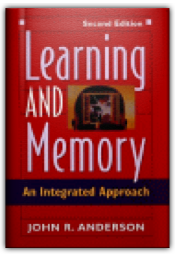
From one of the leading researchers in the field of human memory comes the new edition of a truly integrative perspective on learning and memory! Rather than forge a simple synthesis, Anderson integrates learning research on animals and memory research on humans without distorting the character of either one. The result is a more complete picture of learning, including material on skill acquisition, inductive learning, and applications to education. 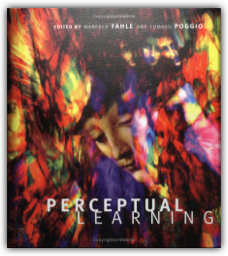
Perceptual learning is the specific and relatively permanent modification of perception and behavior following sensory experience. It encompasses parts of the learning process that are independent from conscious forms of learning and involve structural and/or functional changes in primary sensory cortices. A familiar example is the treatment for a "lazy" or crossed eye. Covering the good eye causes gradual improvement in the weaker eye's cortical representations. If the good eye is patched too long, however, it learns to see less acutely.This book presents advances made in the last decade in this rapidly growing field. The first part examines neuronal changes caused by lesions or external influences. It discusses the effects of these changes on behavior and the extent to which plasticity in sensory systems is possible. Taking a broader view, the second part looks at how more conscious or systemic stimuli cause cortical changes. Clinical trials in which subjects are taught to recognize visual and auditory stimuli demonstrate the relationship between perceptual and cognitive learning. The final sections offer general models of perceptual learning and discuss the future of the field. 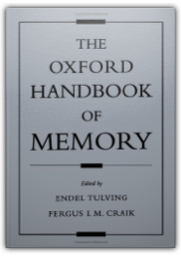
The strengths and weaknesses of human memory have fascinated people for hundreds of years, so it is not surprising that memory research has remained one of the most flourishing areas in science. During the last decade, however, a genuine science of memory has emerged, resulting in research and theories that are rich, complex, and far reaching in their implications. Endel Tulving and Fergus Craik, both leaders in memory research, have created this highly accessible guide to their field. In each chapter, eminent researchers provide insights into their particular areas of expertise in memory research. Together, the chapters in this handbook lay out the theories and presents the evidence on which they are based, highlights the important new discoveries, and defines their consequences for professionals and students in psychology, neuroscience, clinical medicine, law, and engineering. 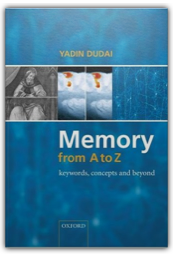
This is an innovative and engaging companion to the language of memory research. It consists of over 130 entries, bound within a coherent conceptual framework. Each entry starts with a definition, or a set of definitions, followed by an in-depth and provocative discussion of the origin, meaning, usage and aplicability of ideas and problems central to the neuroscience of memory and scientific culture at large. The entries, linked by webs of associations, can be read and enjoyed, and provide a versatile tool kit: a source for definitions, information and further reading; a trigger for contemplation, discussion and experimentation; and an aid to study, teaching and debate in classes and seminars. The text is supported by an extensive reference listing, and there is a comprehensive subject index, incorporating a much wider range of terms relevant to the field. 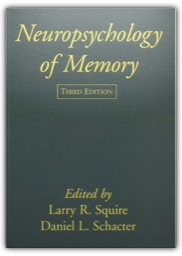
This important reference and text brings together leading neuroscientists to describe current approaches to the study of memory. The third edition gives particular attention to neuroimaging, which has emerged in the past decade as one of the most active areas of research in the field. Other major approaches covered are lesions; electrophysiology; single-unit recording; pharmacology; and molecular genetics, including new work with genetically modified mice. Chapters are organized into three sections, presenting state-of-the-art studies of memory in humans, nonhuman primates, and rodents and birds. Each chapter explicates the theoretical and methodological underpinnings of the authors' research program, reviews salient empirical findings, and identifies promising directions for future investigation. Featured are more than 50 illustrations, including three in color. |
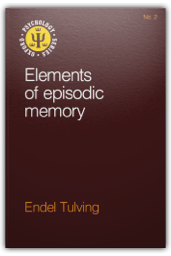
Elements of Episodic Memory was a seminal text in the memory literature, highly cited and influential. It has been unavailable for some years, but is now back in print as in its original form, with this reissue. 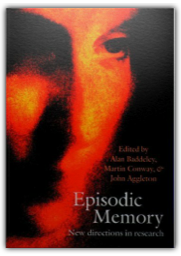
The term 'episodic memory' refers to our memory for unique, personal experiences, that we can date at some point in our past- our first day at school, the day we got married. It has again become a topic of great importance and interest to psychologists, neuroscientists, and philosophers. How are such memories stored in the brain, why do certain memories disappear (especially those from early in childhood), what causes false memories (memories of events we erroneously believe have really taken place)? Since Endel Tulving's classic book 'Episodic Memory' (OPU, 1983) very few books have been published on this topic. In recent years however, many of the assumptions made about episodic memory have had to be reconsidered as a result of new techniques, which have allowed us a far deeper understanding of episodic memory. In 'Episodic memory: new directions in research' three of the worlds leading researchers in the topic of memory have brought together a stellar team of contributors from the fields of cognitive psychology, neuropsychology, and neuroscience, to present an account of what we now know about this fundamentally important topic. The list of contributors includes, amongst others, Daniel Schacter, Richard Morris, Farebeh Vargha-Khadem, and Endel Tulving. The work presented within this book will have a profound effect on the direction that future research in this topic will take. 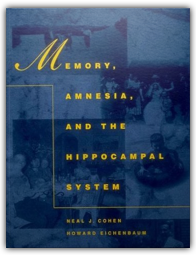
In this sweeping synthesis, Neal J. Cohen and Howard Eichenbaum bring together converging findings from neuropsychology, neuroscience, and cognitive science that provide the critical clues and constraints for developing a more comprehensive understanding of memory. Specifically, they offer a cognitive neuroscience theory of memory that accounts for the nature of memory impairment exhibited in human amnesia and animal models of amnesia, that specifies the functional role played by the hippocampal system in memory, and that provides further understanding of the componential structure of memory.The authors' central thesis is that the hippocampal system mediates a capacity for declarative memory, the kind of memory that in humans supports conscious recollection and the explicit and flexible expression of memories. They argue that this capacity emerges from a representation of critical relations among items in memory, and that such a relational representation supports the ability to make inferences and generalizations from memory, and to manipulate and flexibly express memory in countless ways. In articulating such a description of the fundamental nature of declarative representation and of the mnemonic capabilities to which it gives rise, the authors' theory constitutes a major extension and elaboration of the earlier procedural-declarative account of memory.Support for this view is taken from a variety of experimental studies of amnesia in humans, nonhuman primates, and rodents. Additional support is drawn from observations concerning the neuroanatomy and neurophysiology of the hippocampal system. The data taken from divergent literatures are shown to converge on the central theme of hippocampal involvement in declarative memory across species and across behavioral paradigms.Neal J. Cohen is Assistant Professor in the Amnesia Research Laboratory at Beckman Institute for Advanced Science and Technology, and in the Department of Psychology at the University of Illinois. Howard Eichenbaum is Professor of Psychology and Neurobiology at the University of North Carolina, Chapel Hill. 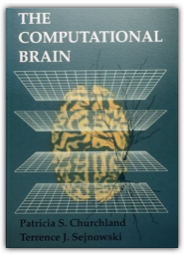
How do groups of neurons interact to enable the organism to see, decide, and move appropriately? What are the principles whereby networks of neurons represent and compute? These are the central questions probed by The Computational Brain. Churchland and Sejnowski address the foundational ideas of the emerging field of computational neuroscience, examine a diverse range of neural network models, and consider future directions of the field. The Computational Brain is the first unified and broadly accessible book to bring together computational concepts and behavioral data within a neurobiological framework.Computer models constrained by neurobiological data can help reveal how -networks of neurons subserve perception and behavior - bow their physical interactions can yield global results in perception and behavior, and how their physical properties are used to code information and compute solutions. The Computational Brain focuses mainly on three domains: visual perception, learning and memory, and sensorimotor integration. Examples of recent computer models in these domains are discussed in detail, highlighting strengths and weaknesses, and extracting principles applicable to other domains. Churchland and Sejnowski show how both abstract models and neurobiologically realistic models can have useful roles in computational neuroscience, and they predict the coevolution of models and experiments at many levels of organization, from the neuron to the system.The Computational Brain addresses a broad audience: neuroscientists, computer scientists, cognitive scientists, and philosophers. It is written for both the expert and novice. A basic overview of neuroscience and computational theory is provided, followed by a study of some of the most recent and sophisticated modeling work in the context of relevant neurobiological research. Technical terms are clearly explained in the text, and definitions are provided in an extensive glossary. The appendix contains a précis of neurobiological techniques.Patricia S. Churchland is Professor of Philosophy at the University of California, San Diego, Adjunct Professor at the Salk Institute, and a MacArthur Fellow. Terrence J. Sejnowski is Professor of Biology at the University of California, San Diego, Professor at the Salk Institute, where he is Director of the Computational Neurobiology Laboratory, and an Investigator of the Howard Hughes Medical Institute. 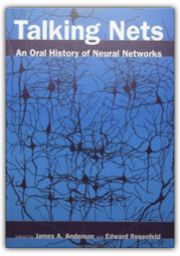
Since World War II, a group of scientists has been attempting to understand the human nervous system and to build computer systems that emulate the brain's abilities. Many of the early workers in this field of neural networks came from cybernetics; others came from neuroscience, physics, electrical engineering, mathematics, psychology, even economics. In this collection of interviews, those who helped to shape the field share their childhood memories, their influences, how they became interested in neural networks, and what they see as its future.The subjects tell stories that have been told, referred to, whispered about, and imagined throughout the history of the field. Together, the interviews form a Rashomon-like web of reality. Some of the mythic people responsible for the foundations of modern brain theory and cybernetics, such as Norbert Wiener, Warren McCulloch, and Frank Rosenblatt, appear prominently in the recollections. The interviewees agree about some things and disagree about more. Together, they tell the story of how science is actually done, including the false starts, and the Darwinian struggle for jobs, resources, and reputation. Although some of the interviews contain technical material, there is no actual mathematics in the book.Contributors : James A. Anderson, Michael Arbib, Gail Carpenter, Leon Cooper, Jack Cowan, Walter Freeman, Stephen Grossberg, Robert Hecht-Neilsen, Geoffrey Hinton, Teuvo Kohonen, Bart Kosko, Jerome Lettvin, Carver Mead, David Rumelhart, Terry Sejnowski, Paul Werbos, Bernard Widrow. 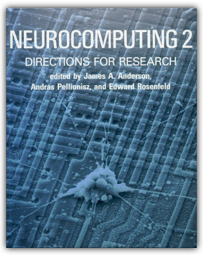
In bringing together seminal articles on the foundations of research, the first volume of Neurocomputing has become an established guide to the background of concepts employed in this burgeoning field. Neurocomputing 2 collects forty-one articles covering network architecture, neurobiological computation, statistics and pattern classification, and problems and applications that suggest important directions for the evolution of neurocomputing.James A. Anderson is Professor in the Department of Cognitive and Linguistic Sciences at Brown University. Andras Pellionisz is a Research Associate Professor in the Department of Physiology and Biophysics at New York Medical Center and a Senior National Research Council Associate to NASA. Edward Rosenfeld is editor and publisher of the newsletters Intelligence and Medical Intelligence. 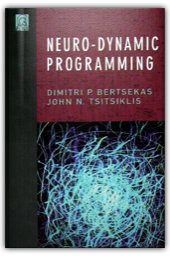
This is the first textbook that fully explains the neuro-dynamic programming/reinforcement learning methodology, which is a recent breakthrough in the practical application of neural networks and dynamic programming to complex problems of planning, optimal decision making, and intelligent control. |

Máté Lengyel
Collection Total:
201 Items
201 Items
Last Updated:
May 28, 2012
May 28, 2012

 Made with Delicious Library
Made with Delicious Library